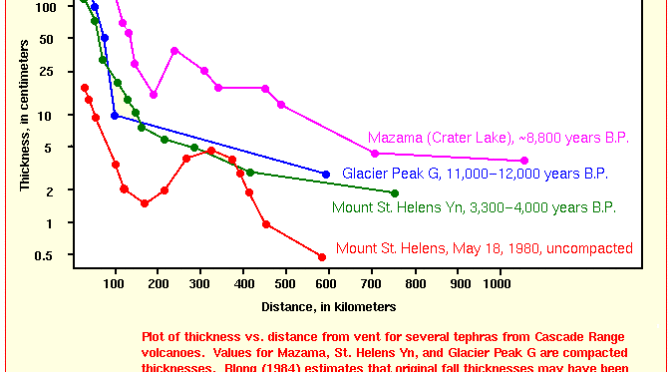The original thickness of Mazama ash at this site is about 38 centimeters. The in-place fall deposit is buried by about 70 centimeters of reworked Mazama ash and scoriaceous ash of Egan cone. The position of this site at the base of a slope probably ensured rapid burial of the fall deposit by reworked material.
Mazama ash exposed here is composed of two distinct units. The lower unit is fine- to medium-grained, light-gray to white ash, and contains abundant ferromagnesian minerals and lithic fragments. It is also conspicuously laminated. The upper unit is thicker, coarser grained, and distinctly more yellow than the lower unit. The upper unit ranges from medium to coarse ash at its base to coarse ash and fine lapilli in its upper part. This sequence is typical of Mazama ash in azimuths north-northeast of Crater Lake.
Mazama ash serves as an important stratigraphic marker in central Oregon; its thickness and character make it readily indentifiable in the field. Determining the relation of a deposit or surface to Mazama ash is a fundamental task, and, although obvious at this stop, the relation is not always so clear. The deposit of thick reworked ash seen here indicates that the ash has been thinned or removed entirely from other places. The problem of reworking is especially significant at high altitudes where slope processes occur at high rates, as we shall see on the upper slopes of Mount Bachelor.


